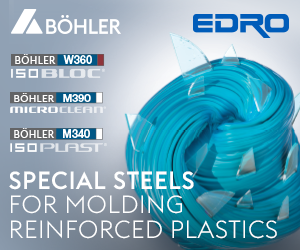New Shelf-life Extending Packaging Technologies
Both Nova Chemicals and Mitsubishi Gas Chemical America have launched novel packaging technologies.
I recently had discussions with experts from both Nova Chemicals (U.S. office in Moon Township, Penn) and Mitsubishi Gas Chemical America (U.S. office in New York City), regarding their new flexible, shelf-extending packaging technologies. Both companies will showcase these technologies at Pack Expo Las Vegas, Sept. 25-27. Here’s the scoop:

Nova Chemicals has developed two easily recyclable flexible packaging film structures: one that is based on a moisture barrier formulation for items such as dry foods and mixes, frozen fruit, and confectionary; and, one with both a moisture and oxygen barrier formulation for nut mixes, granola bars, meats and cheeses and other snack foods that have traditionally required rigid or non-recyclable mixed-material packaging
These resin formulations, including LLDPE and HDPE, are based on Nova’s dual-reactor Advanced Sclairtech Technology which produces a broad range of single-site catalyzed octane copolymers.
Food packaging market manager Mike Cappelli says:
“Our design team set out using this technology to design polyethylene film resin formulations for multilayer packaging—some for stiffness, some for sealant, some for barrier…This is a win for customers, the industry and the environment. It speaks to the consumer desire for lightweight, economical and sustainable packaging.”

Both base recipes are certified to carry the “In store drop-off” package label from How2Recycle, a rapidly growing program to help consumers understand end-of-life recycling options. Also, the designs are compatible with the #2 HDPE recycling stream.
The new structure designs can be used in a wide variety of package formats, including the popular and fast-growing stand-up pouch, pillow pouch, and flow wrapper. Also, packages can be customized for single-serve or multi-use through addition of zippers or fitments. Processors and converters can work with Nova’s experts at its Centre for Performance Applications to collaborate on film structures for the specific applications. The Centre recently completed installation of its new Effytec horizontal fill seal (HFFS) pouch maker, which will allow creation of prototype packages that can be tested on-site. In addition to excellent barrier properties, Cappelli adds that field experience has shown that traditional printing and inks are used with no problem with reverse print so it’s not subject to a mess or surface printing.
MGC has developed a technology that potentially doubles shelf life for organic and natural foods. Embedded as a film layer in either LLDPE or PP retort packaging applications, it removes oxygen from within sealed bags and pouches. The technology is based on MGC’s oxygen-scavenging Ageless OMAC technology which is made by compounding an iron powder as the active ingredient and is sandwiched between a barrier layer and a sealant layer. The technology is now available as a resin to North American film producers and converters, and can efficiently run on legacy processing systems.
The embedded film layer has been shown to extend and protect food’s natural characteristics without sachets, added spices or sodium. It is said to be ideally suited for soups, sauces, processed fruit, dips, protein bars, prepared meals and wet pet foods, which are particularly vulnerable to food spoilage.
“We offer food processors a free-assessment to determine the increased shelf life that our technology will bring to their brands. Our technology will help food manufacturers build greater consumer preference and brand loyalty for their natural and organic and gluten-free products.” He also added that Mitsubishi will provide resin samples to film processors and converters to test run the technology.

Related Content
Cooling the Feed Throat and Screw: How Much Water Do You Need?
It’s one of the biggest quandaries in extrusion, as there is little or nothing published to give operators some guidance. So let’s try to shed some light on this trial-and-error process.
Read MoreThe Importance of Barrel Heat and Melt Temperature
Barrel temperature may impact melting in the case of very small extruders running very slowly. Otherwise, melting is mainly the result of shear heating of the polymer.
Read MoreFormulating LLDPE/LDPE Blends For Abuse–Resistant Blown Film
A new study shows how the type and amount of LDPE in blends with LLDPE affect the processing and strength/toughness properties of blown film. Data are shown for both LDPE-rich and LLDPE-rich blends.
Read MoreUnderstanding Melting in Single-Screw Extruders
You can better visualize the melting process by “flipping” the observation point so that the barrel appears to be turning clockwise around a stationary screw.
Read MoreRead Next
Beyond Prototypes: 8 Ways the Plastics Industry Is Using 3D Printing
Plastics processors are finding applications for 3D printing around the plant and across the supply chain. Here are 8 examples to look for at NPE 2024.
Read MoreFor PLASTICS' CEO Seaholm, NPE to Shine Light on Sustainability Successes
With advocacy, communication and sustainability as three main pillars, Seaholm leads a trade association to NPE that ‘is more active today than we have ever been.’
Read More
























